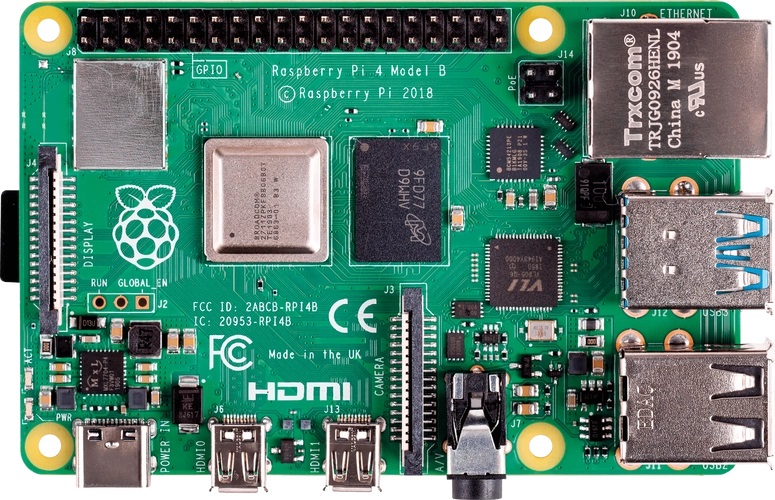安装、设置系统
下载镜像,烧录
- 下载官网最新64位系统
使用BalenaEtcher烧录进TF卡里注意!!!,不再推荐了,应该使用树莓派官方镜像烧录工具,否则难以设置新用户,因为不再预置
pi默认用户,详情见官网说明
设置无头启动
开启SSH
烧录完成的TF卡连接电脑,进入到boot根目录,新建一个名为
ssh的空白文件(不需要后缀名)设置WIFI连接
- TF卡插入电脑,在 boot 分区下新建
wpa_supplicant.conf文件 按照下面的参考格式填入内容并保存
wpa_supplicant.conf文件# 国家码设置 country=CN # 接口设置 ctrl_interface=DIR=/var/run/wpa_supplicant GROUP=netdev update_config=1 # 网络信息配置 network={ ssid="NTest" # wifi账号 psk="12345678" # wifi密码,一般要>8个字符 key_mgmt=WPA-PSK # 密钥管理算法,通常家用路由都是WPA-PSK,企业路由是WPA-EAP # 如果要连接的wifi是没有密码的,需要配置为:key_mgmt=NONE #scan_ssid=1 # 对于隐藏的SSID,需要配置此参数 priority=1 # 优先级,数字越大,优先级越高(不可以是负数) } #可以配置多个WIFI network={ ssid="WiFi-B" psk="12345678" key_mgmt=WPA-PSK priority=2 scan_ssid=1 }
- TF卡插入电脑,在 boot 分区下新建
登陆SSH
- 通过路由器查看对应设备的IP地址
- ssh登陆(使用putty或者windows PowerShell都可以)
输入ip地址,连接ssh,默认用户名是:pi默认密码是:raspberry更正!!!!根据官网,新的树莓派映像不再预置用户
pi,将使用引导创建新用户,如果是新用户,需要连接显示器键盘创建新用户,
如果是无头用户,可以使用树莓派官方烧录工具,在设置选项卡中填入用户名和密码
但我不想再接一根线到显示器,也不想非得用官方工具重新烧录,所以还有最后一种手动方法
参考官网给出的方法,原文如下:
This file should contain a single line of text, consisting of username:encrypted- password – so your desired username, followed immediately by a colon, followed immediately by an encrypted representation of the password you want to use. To generate the encrypted password, the easiest way is to use OpenSSL on a Raspberry Pi that is already running – open a terminal window and enter echo 'mypassword' | openssl passwd -6 -stdin This will produce what looks like a string of random characters, which is actually an encrypted version of the supplied password.首先在一台linux系统上生成密码的加密表示文本,使用命令
echo 'mypassword' | openssl passwd -6 -stdin这是使用服务器生成的
jiang123@的加密表示$6$IeHbk8I313satTzC$4jm.6GDK9WbvMfa2rdt6YcE/EXJ8A1u9lvZm9d5Q2EgQpjTSmitTKZ7FCTIIL6ISaFsUQXHYkDphvB6x8eZpH/在boot根目录创建
userconf文件,填入如下。冒号前填你要设置的用户名,冒号后填入用加密表示的密码,不要回车,只有一行,直接保存username:encrypted-password设置windows powershell 自动登陆免密码(可选)
1. 生成公私钥对ssh-keygen将本机的公钥复制到远程机器
Linux(用户端)
ssh-copy-id -i .ssh/id_rsa.pub(公钥路径) 用户名字@192.168.x.xxx- windows(window下无ssh-copy-id 命令)
cat ~/.ssh/id_rsa.pub | ssh root@服务器ip地址 “cat >> ~/.ssh/authorized_keys”
树莓派基础设置
树莓派换源
- 首先通过
uname -m确定你使用的系统的架构。 备份原始文件(可选步骤)
sudo mv /etc/apt/sources.list /etc/apt/sources.list.bak sudo mv /etc/apt/sources.list.d/raspi.list /etc/apt/sources.list.d/raspi.list.bak编辑
/etc/apt/sources.list文件(软件源),参考如下命令:sudo nano /etc/apt/sources.list填入对应内容
# armv7l 用户:编辑 `/etc/apt/sources.list` 文件,删除原文件所有内容,用以下内容取代 deb http://mirrors.tuna.tsinghua.edu.cn/raspbian/raspbian/ bullseye main non-free contrib rpi # deb-src http://mirrors.tuna.tsinghua.edu.cn/raspbian/raspbian/ bullseye main non-free contrib rpi # armv7l 用户如果需要开启 multi-arch 使用 arm64 软件源,需要在 `/etc/apt/sources.list` 中加上 deb [arch=arm64] http://mirrors.tuna.tsinghua.edu.cn/raspbian/multiarch/ bullseye main # aarch64 用户:编辑 `/etc/apt/sources.list` 文件,用以下内容取代: # 默认注释了源码镜像以提高 apt update 速度,如有需要可自行取消注释 deb https://mirrors.tuna.tsinghua.edu.cn/debian/ bullseye main contrib non-free # deb-src https://mirrors.tuna.tsinghua.edu.cn/debian/ bullseye main contrib non-free deb https://mirrors.tuna.tsinghua.edu.cn/debian/ bullseye-updates main contrib non-free # deb-src https://mirrors.tuna.tsinghua.edu.cn/debian/ bullseye-updates main contrib non-free deb https://mirrors.tuna.tsinghua.edu.cn/debian/ bullseye-backports main contrib non-free # deb-src https://mirrors.tuna.tsinghua.edu.cn/debian/ bullseye-backports main contrib non-free deb https://mirrors.tuna.tsinghua.edu.cn/debian-security bullseye-security main contrib non-free # deb-src https://mirrors.tuna.tsinghua.edu.cn/debian-security bullseye-security main contrib non-free编辑系统源配置,参考如下命令:
sudo nano /etc/apt/sources.list.d/raspi.list同样修改网址,修改后文件如下(参考):
# 对于两个架构,编辑 `/etc/apt/sources.list.d/raspi.list` 文件,删除原文件所有内容,用以下内容取代: deb https://mirrors.tuna.tsinghua.edu.cn/raspberrypi/ bullseye main配置更新,逐个输入以下命令更新,速度视网速决定,耐心等待
#更新软件源列表 sudo apt-get update #更新软件版本 sudo apt-get upgrade sudo apt-get dist-upgrade #更新系统内核,可以不更新 sudo rpi-update
树莓派设置
连接后先运行(因为新系统的用户名和密码都是自己创建的,这一步用不着了)passwd更改默认密码,在linux里面键入密码是不会有星号提示的,自行键入然后回车就可以- 再键入
sudo passwd设置管理员账号的密码,建议和上一个设的一样(其实不安全,但确实方便) - 运行
sudo raspi-config命令打开设置界面 - 逐一调试。先选择
Hostname把主机名改成你能够识别的就可以了,要是局域网内就一台树莓派也没必要改了 - 选择
Localisation Options—–>Change Timezone,把时区更改为你所在城市即可(反正中国都一样,随便选) 选择
Interfaceing Options把SSHVNCSPII2CSerial1-WireRemote GPIO都改成开启状态好了,反正现在不用以后说不定会用到。由于开启
VNC需要下载,建议在更改完软件源后再进行这一步!!!!选择(树莓派只有1和2好像有这个选项,4B没有)Overlock选项进行超频,可以直接上到Turbo模式也没问题的- 选择
Advanced Options,选择Expand Filesystem可以把SD卡重构利用,在Memory Split里面选择给GPU分配的内存,直接写到256就可以了。 - 修改默认地区,语言。
- 做完那些选择退出以后机器会重启,需要重连一遍
安装常用软件
默认树莓派没有安装vim,执行下列命令安装。
sudo apt-get install -y vim安装好之后就可以使用vi或者vim进行编辑操作,但是没有代码高亮显示。
在~目录下面新建
.vimrc文件可以实现pi@raspberrypi ~ $ cd ~ pi@raspberrypi ~ $ sudo nano .vimrc //键入以下内容并保存 set number syntax on set tabstop=4为了方便以后给树莓派挂载移动硬盘或U盘,还要安装文件系统格式支持
exFAT格式支持:
sudo apt-get install exfat-fuseNTFS格式支持:
sudo apt-get install ntfs-3g



Comments | NOTHING